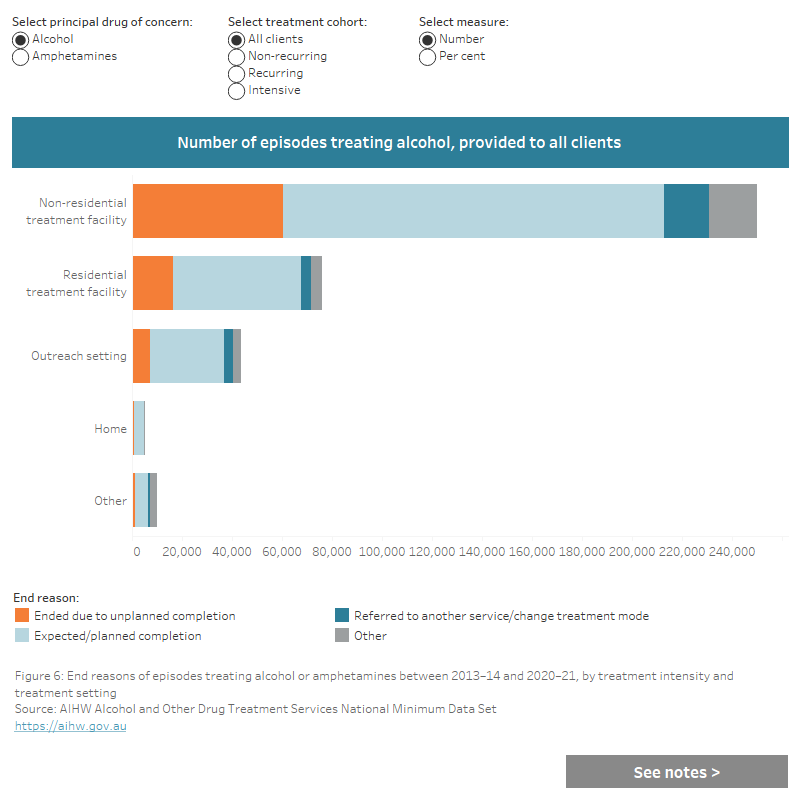Treatment setting
The proportion of episodes delivered in residential settings increased with treatment intensity, with clients receiving intensive treatment more likely to receive treatment in this facility than in any other settings (Figure 6):
- non-recurring: around 1 in 7 episodes for alcohol (14%; 28,712 episodes) and amphetamines (15%; 18,666)
- recurring: around 1 in 5 episodes for alcohol (22%; 22,353 episodes) and amphetamines (18%; 16,994)
- intensive: around 1 in 3 episodes for alcohol (32%; 25,046 episodes) and amphetamines (31%; 14,535).
Episodes were more likely to end in unplanned completion where they were delivered in non-residential or residential treatment facilities, compared to outreach or home settings.
Figure 6: End reasons of episodes treating alcohol or amphetamines between 2013–14 and 2020–21, by treatment intensity cohort and delivery setting
This interactive data visualisation shows the number and proportion of episodes provided to clients receiving intensive, recurring and non-recurring treatment for alcohol or amphetamines. Episodes are presented by reason for cessation, delivery setting and treatment duration.

Alcohol
Among clients seeking treatment for alcohol as a principal drug of concern:
- Episodes delivered in residential settings had a similar likelihood of ending with an unplanned completion across all treatment cohorts (around 1 in 5, or 20–22%).
- In non-residential settings, episodes delivered to clients receiving recurring treatment had the highest likelihood of ending in an unplanned completion (27%) while episodes provided to clients receiving intensive treatment had the lowest (16%).
Amphetamines
Among clients seeking treatment for amphetamines as a principal drug of concern:
- In residential settings, episodes delivered to clients receiving intensive treatment had a lower likelihood of ending as an unplanned completion (30%) compared to those receiving non-recurring and recurring treatment (37% each).
- In non-residential settings, episodes delivered to clients receiving intensive treatment had the lowest likelihood of ending as an unplanned completion (22%) compared to those receiving non-recurring and recurring treatment (32% and 33%, respectively).
For further detail, refer to Supplementary table BLTN.10.


